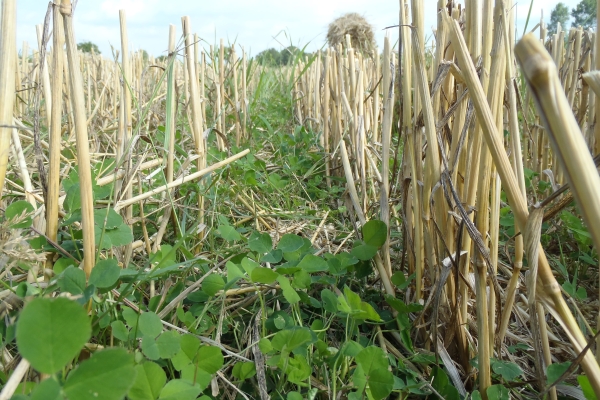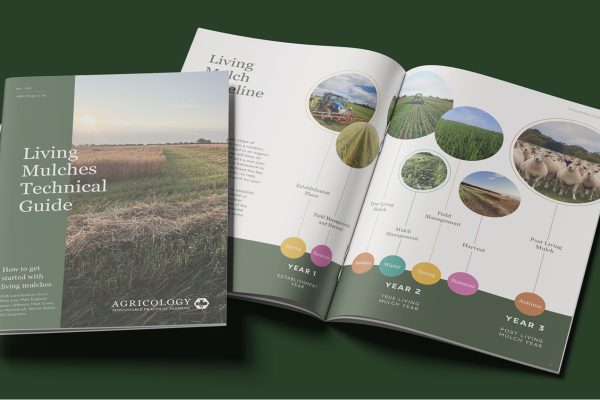Investigation of suitable legume species for undersowing in organic spring wheat
Resource explained
This poster details a study that was carried out at the Royal Agricultural University’s (RAU) Harnhill Manor farm in the UK to compare the influence on wheat growth of different undersown legumes and identify those suitable for undersowing. Through integrating intercropping into your farming system, you can potentially utilise resources more efficiently and reduce weeds, plant pathogens and nitrogen losses. However, competition for potential resources between an undersown crop and main crop can greatly reduce crop growth and yield. This study was conducted from March 2012 to August 2012. Spring wheat was undersown with legumes that included white clover WC (Trifolium repens), black medic BM (Medicago lupulina), bird’s foot trefoil BT (Lotus carniculatus), vetch V (Vicia sativa), red clover RC (Trifolium pratense), crimson clover CC (Trifolium incarnatum) and persian clover PC (Trifolium respinatum).
Findings & recommendations
- Plant heights, ear number, wheat dry matter (DM), grain yield, legume DM and non-wheat DM were recorded and compared for each wheat and undersown crop combination.
- Wheat grain yield forming factors were related positively to plant heights, ear numbers and wheat DM, and negatively to legume DM and non-wheat DM.
- The legumes that were quicker growing and had a higher DM yield directly caused a significant negative effect on the main wheat crop.
- The increase in the DM yield of legumes also indirectly caused an increase in non-wheat DM yields and was significantly higher compared to non-undersown wheat yields.
- The success of cereal-legume bi-cropping not only depends on the undersown legumes, but also on the level of weed population.
- Among the legume species tested, prostrate growing WC and BM proved to be more suitable than other legumes.
Also see ‘Tillage and undersowing effects on organic wheat yield components and yield’ and ‘Characterisation of soil quality following conventional and non-inversion tillage for organic farming.’
(Header image: Undersown white clover establishing in spring wheat. Photo credit: RAU)





